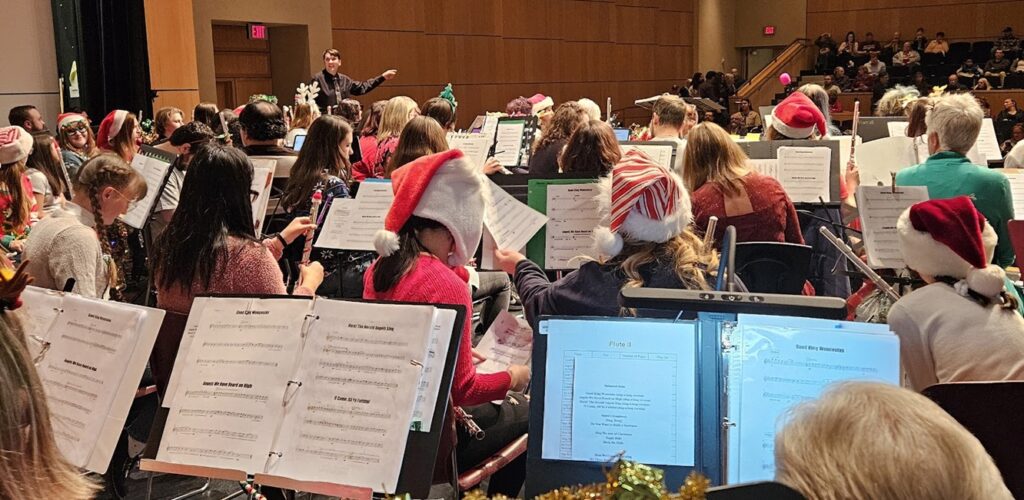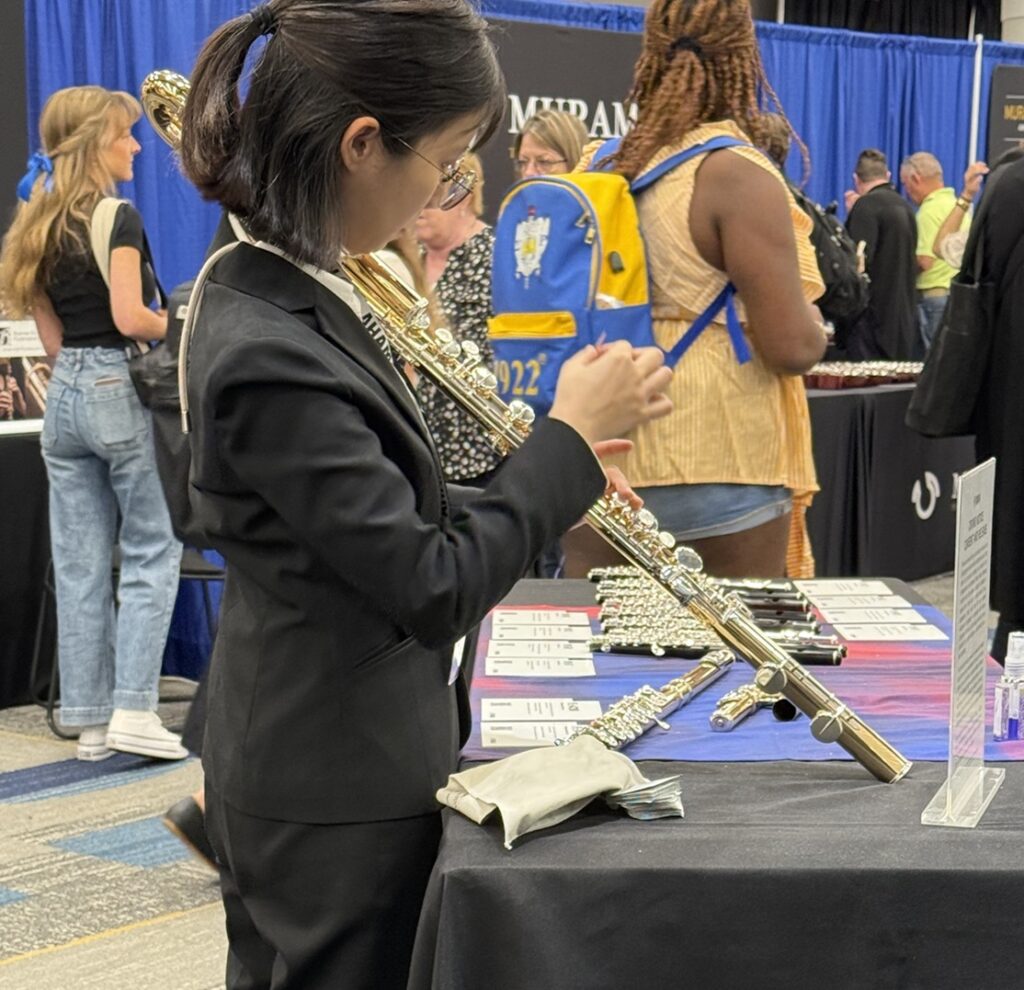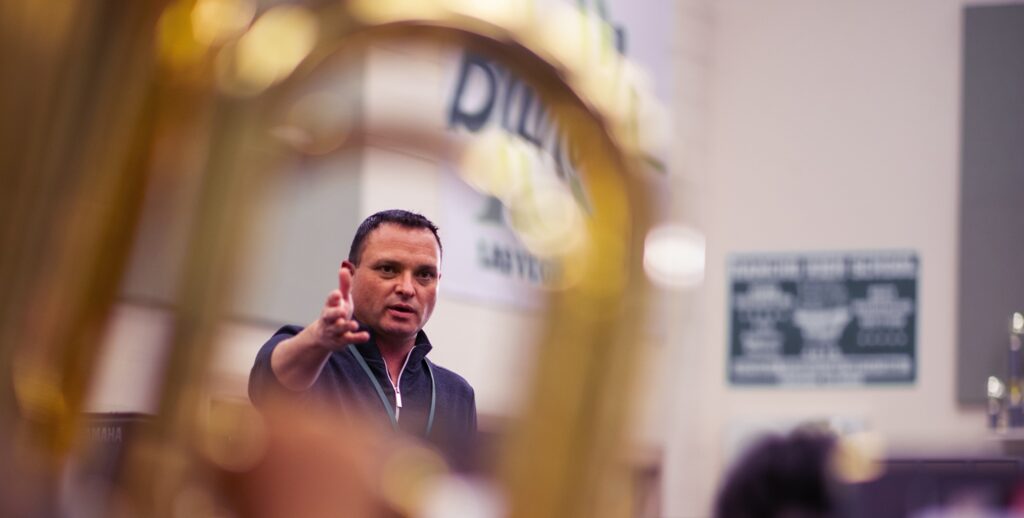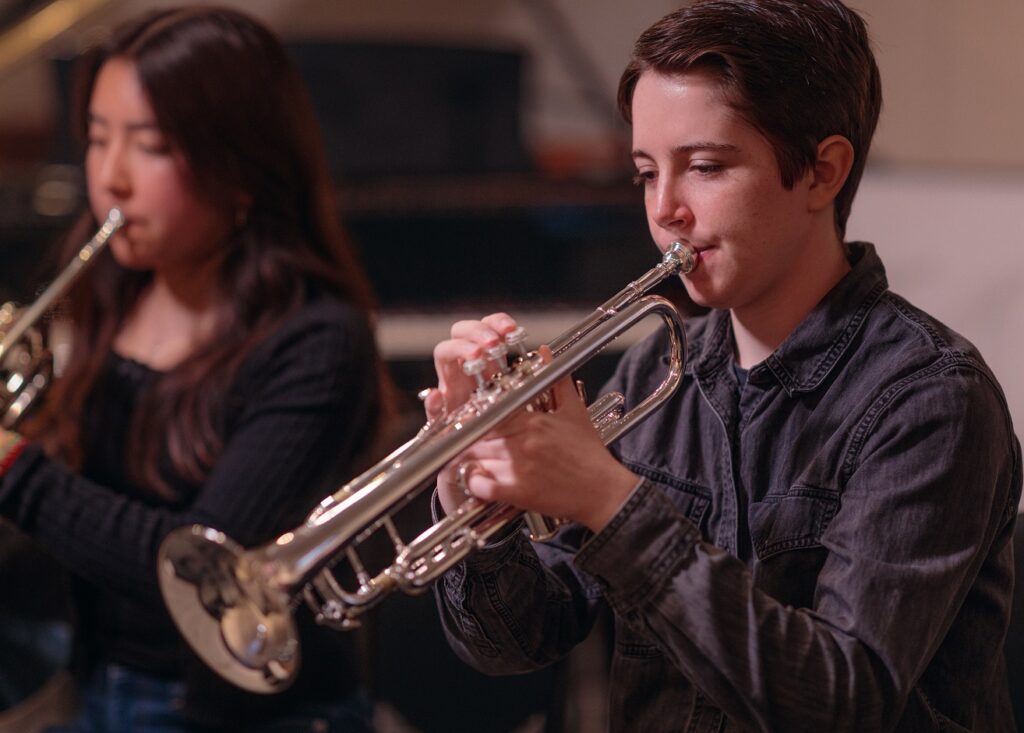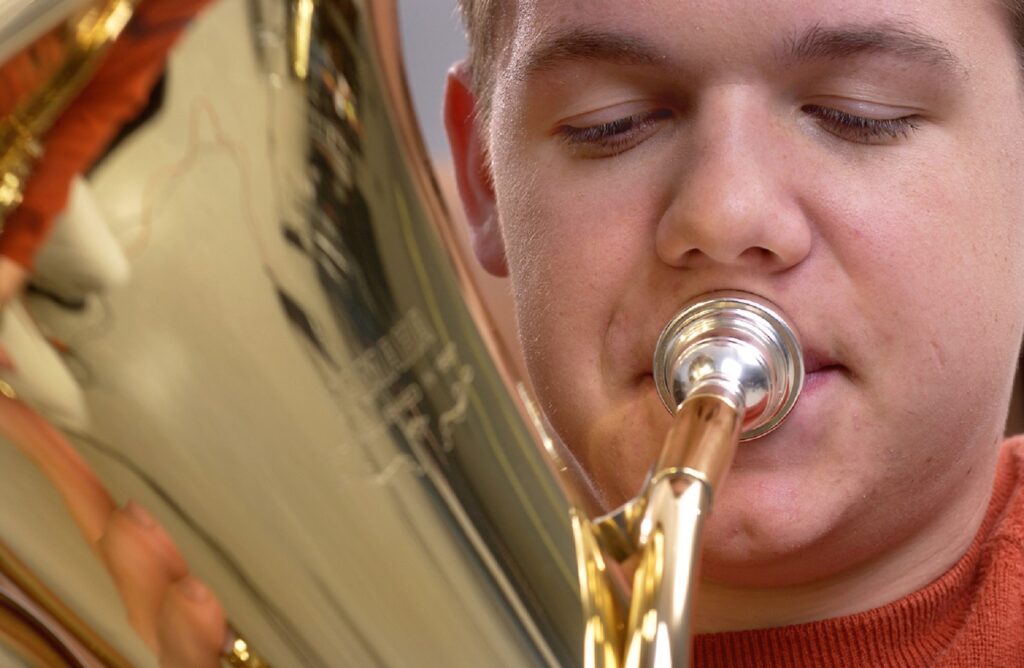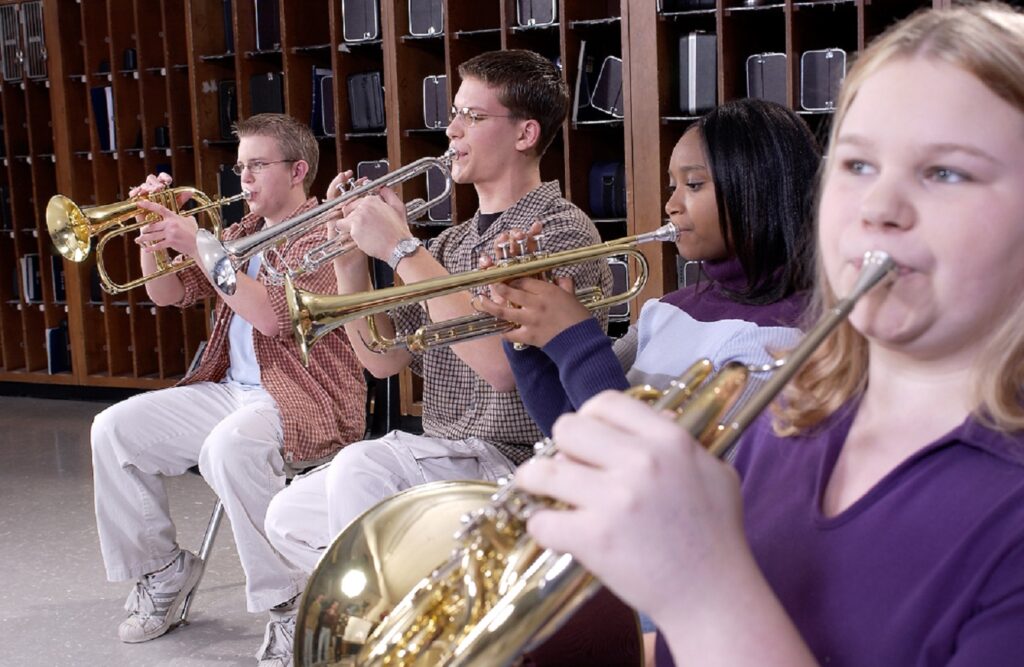Tagged Under:
A YouTube Channel for Winds Practice
An Ohio music educator created a series of videos to help his winds students practice the fundamentals at home.
Lee B. Gibson, the Assistant Director of Bands at Barberton City Schools in Ohio, teaches four periods at the middle school, two at the high school and marching band. Located seven miles from Akron, Barberton High School and Barberton Middle School are across the street from each other with teachers going from campus to campus. It was during one passing period in the pre-COVID era that Gibson had an aha moment in the middle of the street — he would create a YouTube channel to help his winds students practice.
He started the channel nine months before the lockdown. “It was a serendipitous thing,” says Gibson.
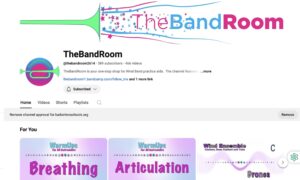
The Result of His Aha Moment
Described as a one-stop shop for practice aids for winds, TheBandRoom videos cover rhythm, breathing exercises, lip slurs, tone development, play-along scale tracks, practice drones and other complementary exercise materials. Though regular uploads have tapered off, TheBandRoom is dynamic, keeping practice sessions fresh and serves the novice-to-professional demographic.
Gibson, who was recognized as a 2025 Yamaha “40 Under 40” music educator, created the channel for students, not as a side hustle, not for money. All the videos have to do with playing and fundamentals. Containing minimal text, they are not intended to be instructional but used for practicing — ideally, on a daily basis.
For example, the Bass Ensemble Drones playlist has 12 videos, each about two and a half minutes in length, with this simple guidance: “A practice drone comprised of a Full Brass section in octaves. Use this drone to practice long tones, intonation, blending and tone color. Listen carefully and match the sound of the drone as closely as possible.”
Warm-up videos include Breathing, Tone Development, Articulation and Lip Slurs offering “play-a-long practice videos.” The Lip Slurs exercise directs students to “use your favorite two-measure lip slur exercise with this. It also works with woodwind technique exercises that are designed to work alongside lip slur exercises.”
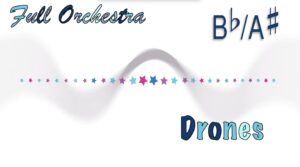
Channel Response
Gibson does all the video production. Thanks to his artistic father and stepfather, he has the skillset to make videos. His degree in composition gave him the tools to craft backing tracks and arrange the music. Gibson modestly notes there is a community of other YouTube music educator channels with better production values than his, citing Swick’s Classroom (launched by 2021 Yamaha “40 Under 40” educator Tyler Swick) as superb.
Still, TheBandRoom has been very well received and supported. There’s been no pushback from admin, parents or anyone regarding the YouTube channel. Maybe most important to the channel’s success is Gibson’s very understanding wife. The father of a 6- and 1-year-old jokingly says, “It’s bad enough to be married to a band director!”
The channel has 572 subscribers and 466 videos with 72,000 views and growing. Analytics indicate that most of TheBandRoom’s subscribers are not Gibson’s students — they come from all over the world. There’s TheBandRoom Facebook page, too.
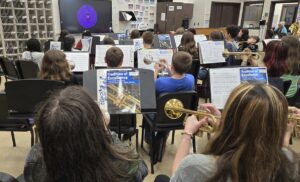
Every Kid Deserves to Play an Instrument
Gibson comes from a musical family, although he’s the first to be musically literate and read music. He joined band in the 5th grade and learned saxophone followed by clarinet in 8th grade. A woodwind doubler, Gibson claims the tuba as his instrument. While playing community band in high school, he decided to be a band director. He went to school for composition and graduated from Bowling Green State University College of Musical Arts, which boasts one of the nation’s top music teacher education programs with more alumni teaching in Ohio than any other university.
Teaching jobs were scarce when he graduated in 2010. He pieced together a livelihood with substitute teaching, freelancing, giving private lessons and working at afterschool programs. His first regular teaching job was choir and general music for pre-kindergarten through 12.
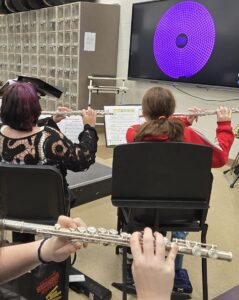
The Barberton City Schools district is a rarity in education. Its music programs are “extremely well-funded,” according to Gibson, who also has secured grants to further enrich music education. The 3,645-student district has three band directors, two choir directors and two elementary music teachers. The Barberton Band Boosters have purchased instruments throughout the years, and the district covers the cost of repairs. The instruments range from beginning up to professional-quality for upper-level high school students. The schools also pay for other costs like reeds and private lessons.
Philosophically speaking, Gibson believes every kid deserves to be musically literate and play an instrument. He is appreciative that music is a graduation requirement in his district. He feels “lucky” he has the resources to do special projects like TheBandRoom YouTube channel for his students because it has given him the chance to use his skills in different and creative ways. A win for him, his students and music education around the world.
Gibson encourages all educators to cultivate their special talents and abilities to use in the classroom — not everyone has to build a YouTube channel! Following are his 10 reasons why.
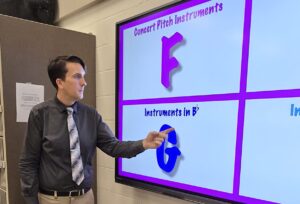
10 Reasons to Cultivate Your Special Qualities
- Forge Stronger Connections: When you let your unique personality shine, you create more genuine connections with students. They see you, not just a teacher, which builds trust and rapport.
- Boost Student Engagement: Your unique approach can make lessons more memorable and engaging. Maybe you have a knack for storytelling, a talent for funny analogies or a passion for a niche subject that you can weave into your teaching.
- Increase Your Confidence: The more you lean into what makes you special, the more confident you’ll feel in your teaching abilities. This confidence is contagious and will have a positive impact in your classroom.
- Stand Out (in a Good Way!): In a sea of educators, your unique style will help you stand out. This isn’t about being flashy but about offering something distinctive that students appreciate and remember.
- Find Your Teaching Niche: Discovering what makes you unique can help you identify your “superpower” as an educator. Are you the master of classroom management, the queen of creative projects or the guru of group discussions?
- Model Individuality for Students: By embracing your own uniqueness, you implicitly teach students the value of their own individuality. It shows them it’s okay to be different and to celebrate what makes them special.
- Develop Creative Solutions: Your unique perspective can lead to innovative solutions for classroom challenges. When you think outside the box, you’re more likely to find fresh, effective ways to teach and manage.
- Be More Authentic: Trying to be someone you aren’t is exhausting! Embracing your unique quirks and strengths allows you to be truly authentic, making your teaching feel more natural and less like an act.
- Enjoy Teaching More: At the end of the day, when you’re being true to yourself and leveraging your unique strengths, teaching becomes a more joyful and fulfilling experience for everyone involved.
- Rekindle Your Passion: Sometimes, teaching can feel like a routine. Tapping into your unique self can reignite your passion for the profession and remind you why you became a teacher in the first place.
Following his own advice, Gibson keeps his talents honed for use in and outside of the classroom. Another Gibson project is the Akron Piccolo Christmas concert.










